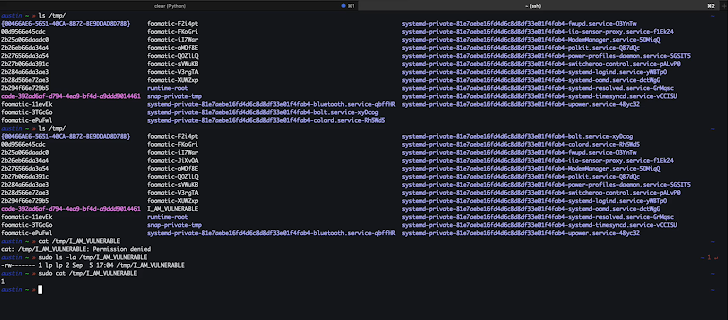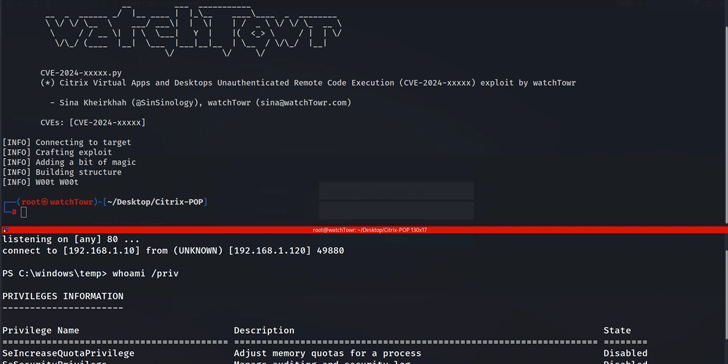Critical Linux CUPS Printing System Flaws Lead to Remote Command Execution
In a recent revelation, cybersecurity experts identified serious vulnerabilities in the Common Unix Printing System (CUPS), a critical service utilized across multiple Linux distributions for managing print jobs. The discovery of remote code execution (RCE) vulnerabilities in CUPS could allow malicious actors to execute arbitrary commands on affected systems. If successfully exploited, these flaws could compromise Linux desktops, servers, and even broader network environments.
CUPS Overview and Vulnerabilities
The Common Unix Printing System (CUPS) is integral to many Unix-like operating systems, including Linux, and manages the tasks required for printing across the network. Unfortunately, researchers uncovered a set of vulnerabilities that, if left unpatched, can allow unauthenticated attackers to execute commands remotely.
Key Vulnerabilities:
A net consequence of these shortcomings is that they could be fashioned into an exploit chain that allows an attacker to create a malicious, fake printing device on a network-exposed Linux system running CUPS and trigger remote code execution upon sending a print job.
- CVE-2024-47177 – cups-filters <= 2.0.1 foomatic-rip allows arbitrary command execution via the FoomaticRIPCommandLine PPD parameter.
- CVE-2024-47175 – libppd <= 2.1b1 ppdCreatePPDFromIPP2 does not validate or sanitize the IPP attributes when writing them to a temporary PPD file, allowing the injection of attacker-controlled data in the resulting PPD.
- CVE-2024-47076 – libcupsfilters <= 2.1b1 cfGetPrinterAttributes5 does not validate or sanitize the IPP attributes returned from an IPP server, providing attacker-controlled data to the rest of the CUPS system.
- CVE-2024-47176 – cups-browsed <= 2.0.1 binds on UDP INADDR_ANY:631, trusting any packet from any source to trigger a Get-Printer-Attributes IPP request to an attacker-controlled URL.
The list of vulnerabilities is as follows:
- Buffer Overflows: One of the primary flaws involves a buffer overflow that arises when CUPS processes specially crafted IPP (Internet Printing Protocol) requests. The overflow condition can allow an attacker to overwrite portions of memory, which in turn leads to arbitrary code execution on the affected machine.
- Improper Handling of User Input: Another critical issue arises from improper input validation in the system. This flaw can be exploited by remote attackers, allowing them to perform RCE without needing authentication.
- Unauthenticated Access: These vulnerabilities can be exploited without the need for any login credentials, significantly increasing the attack surface for remote threats.
Given the wide use of CUPS in both enterprise and personal settings, the risks are substantial. Many Linux distributions such as Ubuntu, Debian, Fedora, and Red Hat include CUPS as part of their core packages, meaning millions of systems are at risk if left unpatched.
Exploitation Methodology
In essence, the vulnerabilities stem from how CUPS processes IPP print jobs. Attackers can craft and send malicious requests designed to exploit these vulnerabilities, leading to a range of possible outcomes, including unauthorized system access, service disruption, or complete system control.
A common attack vector involves using a specially crafted IPP request to trigger a buffer overflow. When successfully executed, this grants attackers the ability to run arbitrary commands as if they were local users. Additionally, these flaws do not require any prior authentication, making it easy for attackers to launch their assault remotely.
As noted by researchers from Akamai and Qualys, the primary risk lies in the widespread deployment of CUPS in critical environments. Since many organizations rely on networked printers and shared print services, an attacker with access to a vulnerable system could use this foothold to escalate privileges and gain broader control of the network.

Mitigation and Patching
To address these vulnerabilities, the CUPS maintainers released an update (version 2.4.7), which includes patches for the identified flaws. Administrators are urged to update their systems immediately to mitigate the risk of exploitation. If updating is not feasible, applying specific mitigations can help:
- Patch Immediately: Ensure that all systems running CUPS are updated to the latest version.
- Disable Remote Access: If remote access is unnecessary, disabling network access to CUPS can significantly reduce the attack surface.
- Restrict IP Access: Limit the range of IP addresses that can access CUPS, ensuring that only trusted internal machines can communicate with the server.
- Implement Firewalls: Use firewall rules to block access to the CUPS service from external, untrusted networks.
Monitoring network activity and implementing intrusion detection systems can also provide early warning signs of exploit attempts.
Impacts and Risks
If successfully exploited, these vulnerabilities can lead to severe consequences, particularly in enterprise environments. The primary impacts include:
- System Compromise: Attackers can gain full control over affected systems, allowing them to execute arbitrary commands, escalate privileges, and move laterally within the network.
- Data Breaches: Sensitive data stored on the compromised systems could be accessed or exfiltrated.
- Service Disruption: Attackers may disrupt critical services, such as print functions, or use compromised systems to launch further attacks.
Researchers at Bleeping Computer highlighted how attackers could leverage these flaws to target specific Linux distributions that have been slow to patch or implement mitigations. In high-value networks where print services are essential, the risks are multiplied.

Remediation Steps for Securing CUPS Systems
- Update to Latest Version: Install the latest CUPS update (2.4.7) to resolve these vulnerabilities.
- Limit Network Exposure: Ensure that CUPS services are only accessible within trusted internal networks and block external access.
- Enable Logging and Monitoring: Ensure that all CUPS-related activity is logged and monitored for signs of unusual activity.
- Disable Unnecessary Services: If printing services are not needed, consider disabling CUPS entirely to reduce the attack surface.
- Implement Network Segmentation: Place CUPS servers in a segmented network with limited access to other critical infrastructure.



